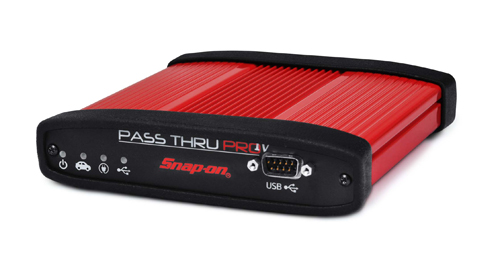
#SNAP ON MODIS UPDATE HACK FULL#
Quick work with a dull knife scraped off the excess conductive ink, and the pad now had full conductive paths with no shorts. I traced a second time, and now it had contact everywhere, including a couple new shorts caused by the ink flattening out as it dried. I let this 1st coat dry overnight, but still had one open trace. Using a $20 silver conductive pen from Radio Hack, trace carefully over the existing traces, creating a new conductive path between the concentric traces and the edge of the membrane contact pad area.

I found all three of my breaks at the neck of the membrane - that is, where the concentric traces all straighten out and make a 1.5' run for the top edge of the membrane, where they contact the control card. Now, with the membrane upside down on your worktable, check each set of silver contacts, in pairs, to ensure continuity.

Be careful not to cut the membrane or any of the concentric silver traces. To get at the silver traces, you need to take a thin, sharp blade (xacto, or razor blade) and carefully dissect the membrane from the conductive pad around its edge - you are essentially slicing through the tacky glue so the membrane can lift off of the thin rubber standoff. This plastic membrane is separated from the graphite pad around its outer edge by about 0.010' of rubber and adhesive, essentially forming a thin 'standoff' preventing the stiff membrane from touching the conductive pad until pressed. The membrane is a thin but strong clear plastic sheet with concentric silver traces beneath the membrane - when you push the thumb button around, you are pressing this membrane at various points onto a graphite pad, thus scrolling the cursor (when it is working well). I opted to remove the thumb button switch membrane. My two reasonable choices were to find a used Modis with a decent thumb card, or to try and fix this one. The good news was my screen was now as good as new, and the Y/N buttons worked as new, but the thumb scroll was now even more touchy and required a lot of pressure to activate - if it decided to work at all.Īfter 3-4 trials of disassembly, more cleaning, etc, a quick continuity test to the 5 silver traces on the thumb pad's contacts to the small circuit board revealed 3 of the 5 to be open circuits - not good. While I had the thumb button switches in hand, I opted to clean the Y/N contacts and the thumb switch contact pad. I dismantled the cover to wet sand (1000/2000/4000) and polish the screen, which meant I had to remove the thumb button and card from the top half of the Modis (2 screws, one small connector). Just a note to let you know that the thumb button *can* be repaired at your kitchen table with a circuit pen.īACKGROUND: I have a 1st Gen working Modis but the screen was severely fogged/scratched. 15 product ratings - Snap-On Modis Ultra EEMS328 V17.4 Automotive Diagnostic Scan Tool DOM Euro Asian. Hope this is helpful Snap On Modis Update Costīuy Snap-on Modis Scanner Diagnostic Kit EEMS300E12 Ver 8.4 w/Case/Adapters/Keys motorcycle in Mount Dora, Florida, US, for US $1,499.99 Find or Sell any Parts for Your Vehicle in USA Parts for Sale. If you are not comfortable removing and soldering the Ic, most electronic repair stores will do the work if you have the parts. I have attached a BMP of the circuit and a BMP to show locations. MODIS boards are soldered using re-flow method but these items can be replaced using low temp solder and a small electronics iron.īe careful removing the old Ic, heat all legs until it easily lifts.ĭo Not Pry It Loose! The printed board may peel up with the Ic. If it is bad you can only get 1/2 the KV output needed. The SMDIC03680TB00KQ00 capacitor is on primary winding. It then increases or decreases the current to the inverter. The LT1786FCS receives info via the mother board SM bus. The LT1786FCS Ic that controls current to the florescent inverter and the primary winding capacitor are the problem 99% of the time.

Hello, I have repaired many MODIS CCFL back lights.


 0 kommentar(er)
0 kommentar(er)
